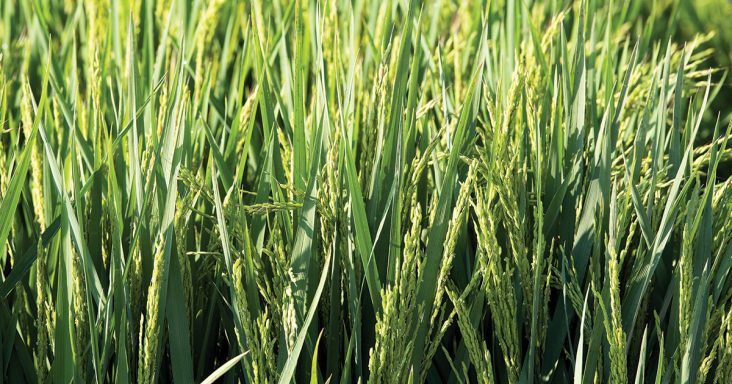Rains likely to hurt Arkansas’ rice crop
by August 14, 2023 11:35 am 741 views

Recent perpetual rains may have a significant impact on Arkansas rice as the crop inches closer to harvest. Northeast Arkansas farmers have been checking their fields for losses after storms late last week and this weekend dumped more than 6 inches of rain in places.
Coming into the week, the National Agricultural Statistics Service listed Arkansas’ rice crop at 10% mature, well ahead of the five-year average of 5%. Rice was 74% headed compared with the five-year average of 65%.
Jackson, Independence, Izard, Searcy and Stone counties were among the hardest hit by the storms, according to the National Weather Service.On social media, farmers reported between 4-8 inches in Independence County and 5-6 inches in Poinsett County.
“It’s not good at all. I’m hearing amounts of 5-6 inches since yesterday,” Jarrod Hardke, extension rice agronomist for the University of Arkansas System Division of Agriculture said on Thursday (Aug. 10). “Rice that’s ready or near ready for harvest has a tendency to cave in and lodge under heavy rain, especially if there’s any wind at all involved,” he said. “I’m waiting to hear more from folks on how it’s holding up. Limited comments so far are things are holding up but rice is starting to sag in some places.”
Matthew Davis, Jackson County extension staff chair, said he had seen about 6 inches of rain near Newport.
“Most of the rice in my plots looks good,” Davis said after making the rounds Thursday morning. “You can see edges blown down where there is heavy grass pressure.”
The grass caught the rain, collapsed and brought neighboring rice plants down with it.
The good news was this — “there were no complete losses anywhere I’ve seen so far,” Davis said.
Arkansas is the top rice growing state, typically growing about half of the nation’s crop annually. Jackson County is the top rice growing county in the state this year with a little more than 112,000 acres dedicated to the crop, according to the Farm Service Agency. Poinsett County ranks second with 107,000 acres while Lawrence County is third with 104,000 acres.
Hardke said that on Monday, heavy rain also affected rice in southeastern Arkansas.
“It put some rice down pretty flat in Chicot County,” he said.
Justin Condry, a meteorologist for the NWS in Little Rock, said the rain scenario was set in motion when a strong low-pressure system moved out of the Central Plains.
“As the low continued to track towards the northeast across central Missouri it pulled a frontal boundary across northern portions of the state,” Condry said.
Overnight, “this boundary stalled, allowing moisture to ride along it. This is where we got into a situation where heavy rainfall began to train and back-build over the same areas,” he said.
“Training” is a phenomenon where repeating areas of rain move over the same area in a short period of time. “Some of the highest totals were out of Independence and Jackson counties overnight, where observers reported 5.85 and 5.37 inches respectively,” Condry said. “For the most part, we are finished with the rainfall in the north for at least the next day or so. As we get into this weekend, models are indicating more showers and thunderstorms could be in the forecast as additional systems impact the state.”
